Tour of California bikes and riders get first taste of rain
Tuesday morning's Stage 2 of the Tour of California brought gray, overcast skies and a steady stream...
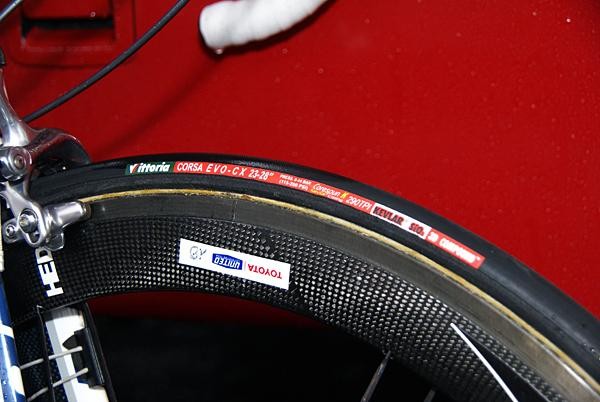
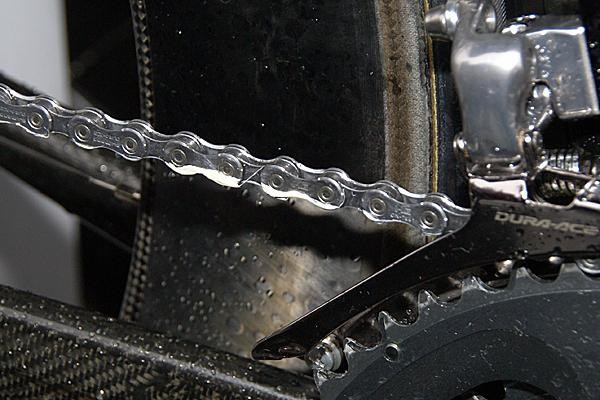
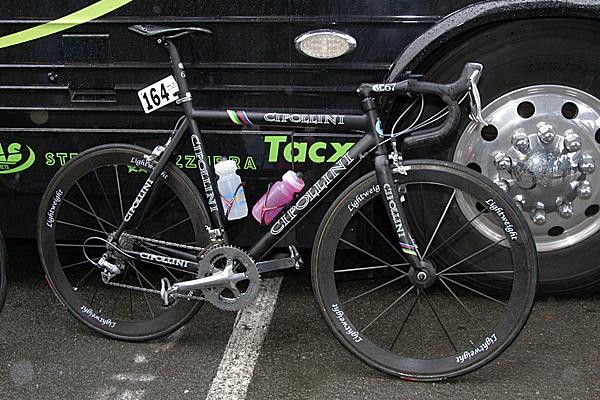
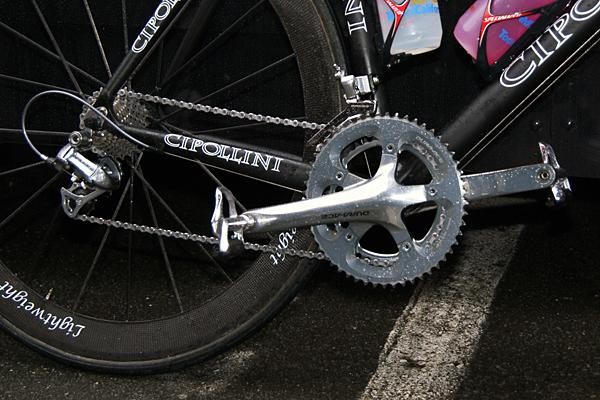
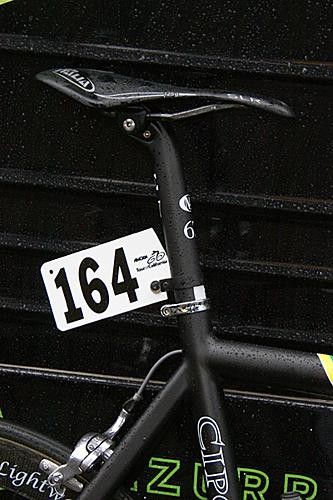
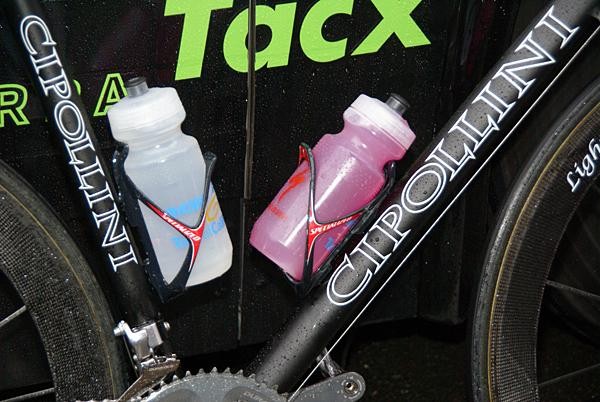




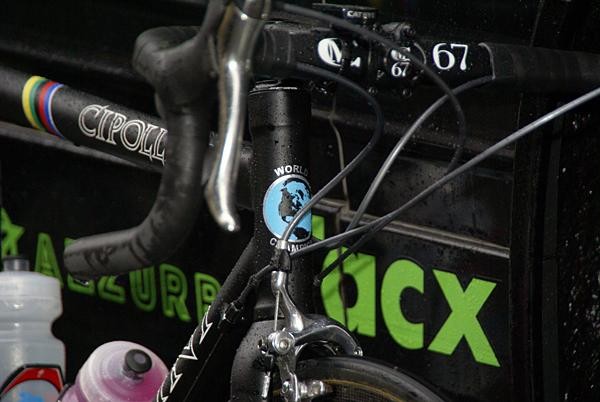
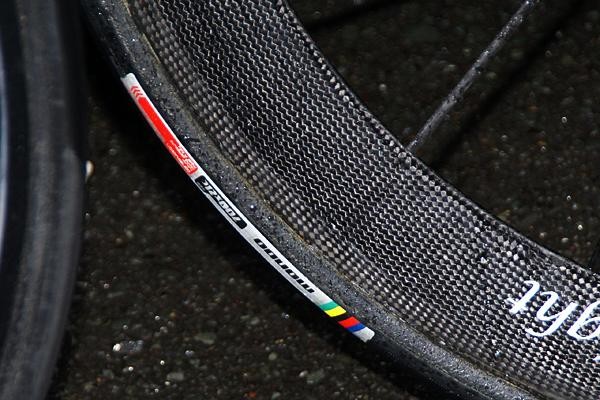
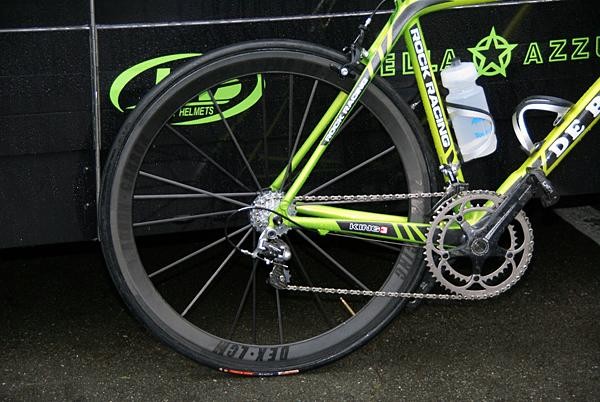
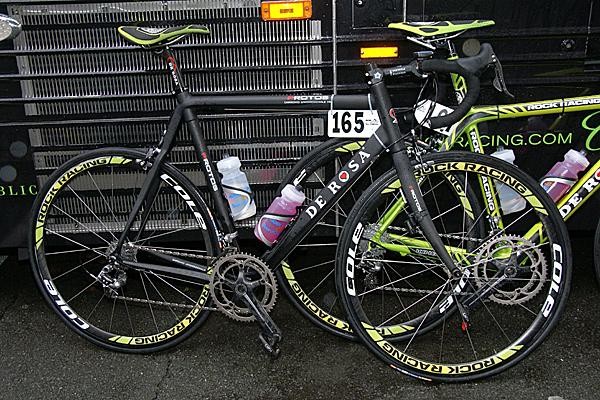
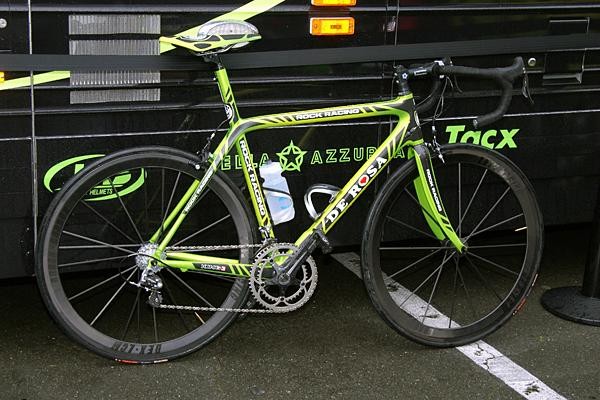
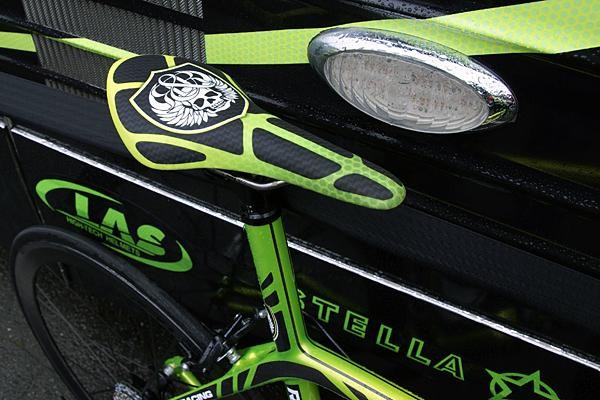
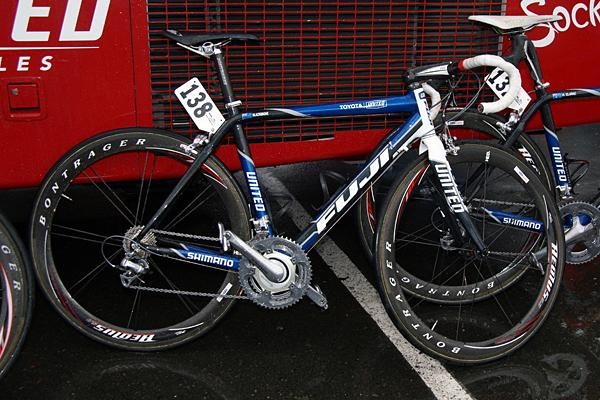
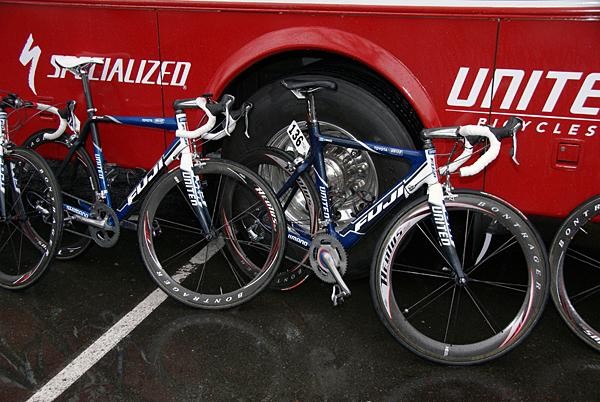
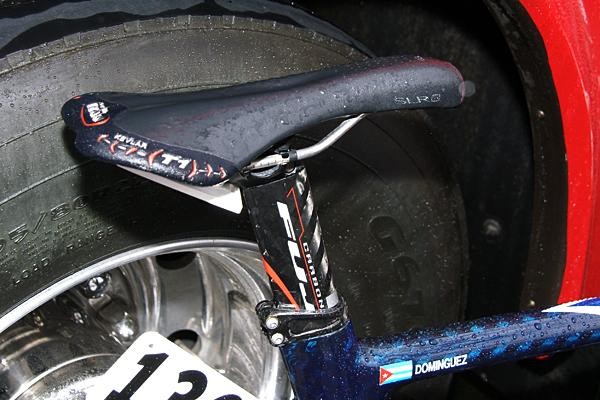
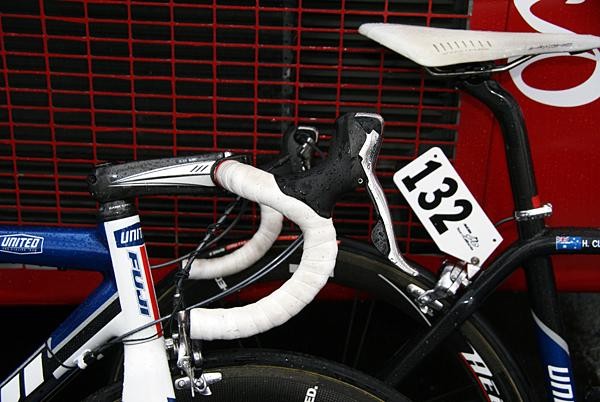
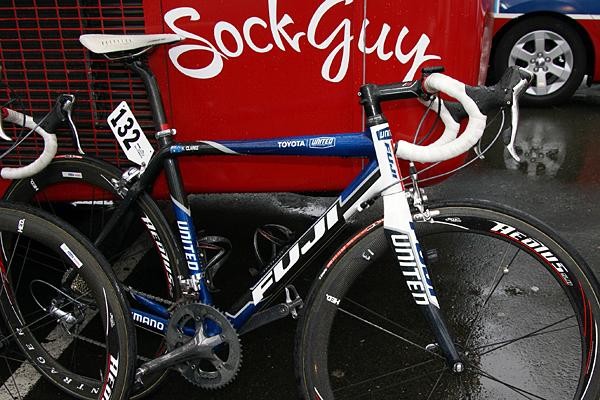

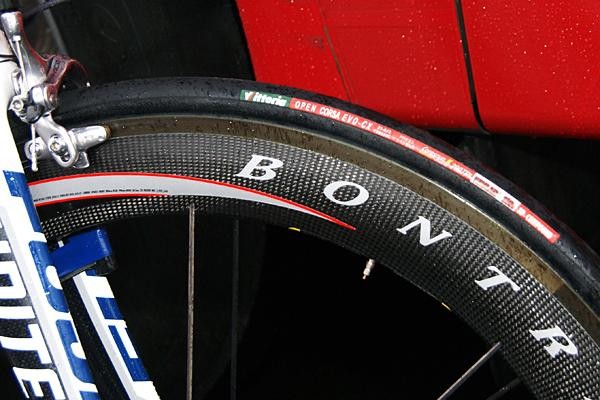
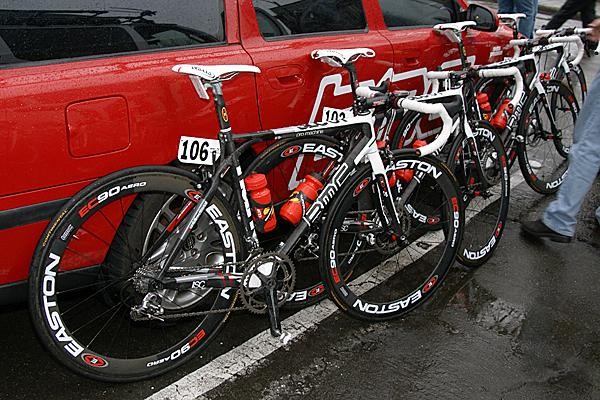
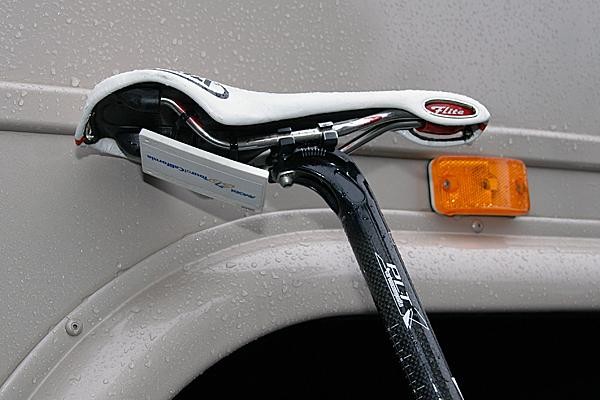

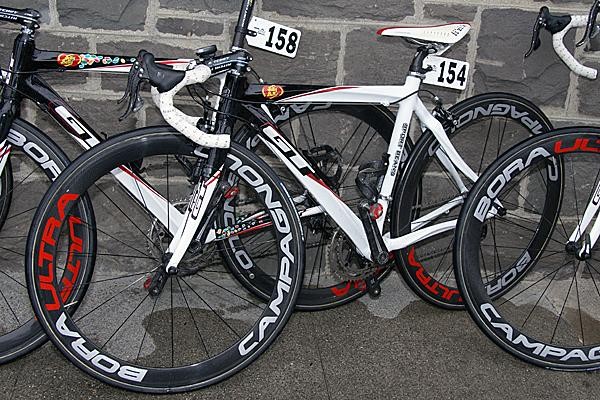
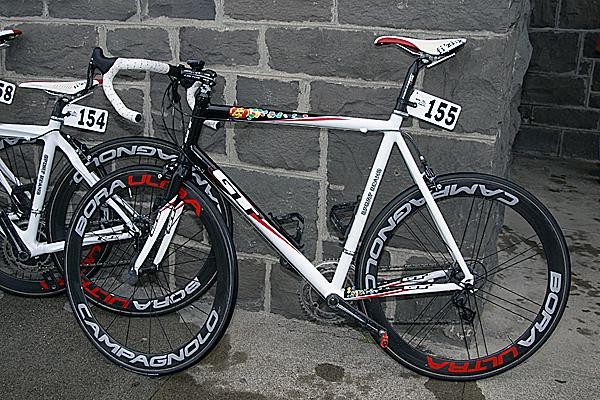
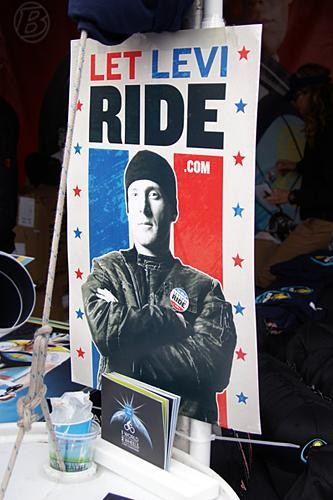
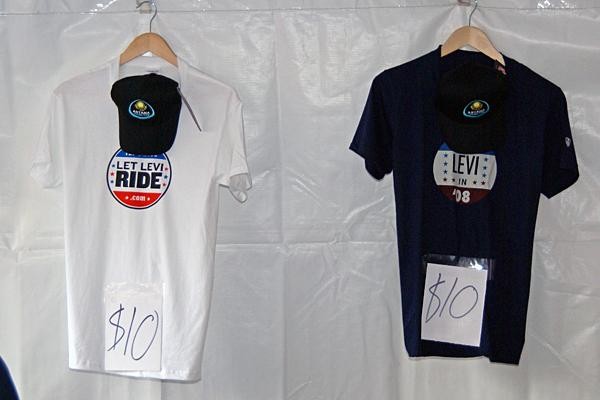
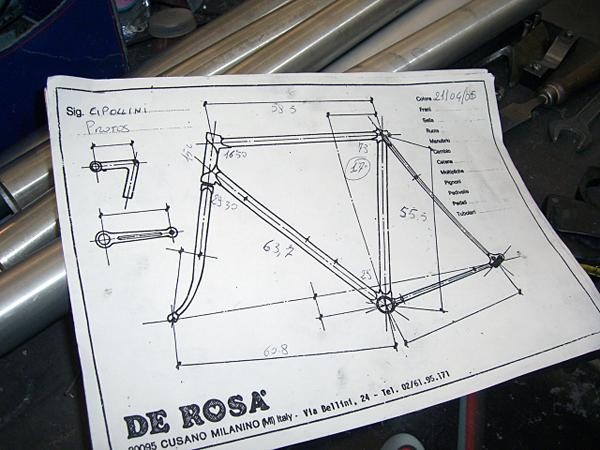
Race Tech: Tour of California, February 20, 2008
Tuesday morning's Stage 2 of the Tour of California brought gray, overcast skies and a steady stream of rain for the 187km (116mi) trip from Santa Rosa to Sacramento. While the riders obviously had to readjust their clothing (and attitudes!) for the wet trip ahead, Mother Nature also provided team mechanics with a little bit of extra work to do. Somewhat surprisingly though, that little bit of extra work really did mostly amount to just that - a little bit of extra work - at least according to the wrenches that we talked to.
In fact, most of the preparation was limited simply to different chain lubricants and perhaps a tire swap. Team mechanic Steve Kiusalas was applying a thin layer of grease (yes, grease, not oil) to the chains of his High Road riders prior to the start while some other mechanics, such as Eva Barabas of Health Net and Ben Oliver of Team Bissell, went with heavier weight oil. Barabas favors Pedro's Syn Lube while Oliver goes with a homemade mixture of marine grease thinned with mineral oil.
According to Oliver, the Bissell team didn't need to swap tires in preparation for the treacherous descent down the backside of the Trinity Rd. climb, either. Oliver said that the rubber compound on the team's Vredestein TriComp Pro tubulars is already soft enough for the wet pavement but he does, however, generally drop inflation pressures across the board. Instead of the usual 120-130psi, riders were running about 100-110psi and have occasionally gone as low as 90psi in the past.
The post-race situation, though, was a bit different although still not as much as we had expected. The only major change Barabas anticipated was "lots of scrubbing" to clear off all of the road grime. It's not even customary to swap out the cables and housings after such as ordeal, at least not after just a single day in rain. Barabas sticks with the stock Shimano cables and pre-lubed SP41 housings fitted with o-ring-equipped housing caps. "[It's] sealed pretty well," she said.
Oliver is even less likely than Barabas to be found swapping cables after a wet day on the road. The '1:1' actuation ratio on Team Bissell's SRAM Red groups requires roughly twice as much cable movement to initiate a gear change as compared to Campagnolo or Shimano, meaning that the team's bikes will generally shift well even with moderate levels of housing contamination. The cables and housings themselves are still important, though, and Oliver fits his riders' bikes with the Gore Ride-On Low Friction cable and housing sets that SRAM includes with its Red groups. They're not sealed in the technical sense but Gore claims the PTFE coating applied to its cables dramatically reduces friction and improves durability in adverse road conditions.
The Lion King yields for no one
Get The Leadout Newsletter
The latest race content, interviews, features, reviews and expert buying guides, direct to your inbox!
Rock Racing's Mario Cipollini is already proving that he was worth whatever money Michael Ball has agreed to pay him. Even at 40 years old, the Lion King landed a hotly contested third place finish at today's Tour of California Stage 2 finish in Sacramento but not while riding an official team DeRosa.
In fact, 'Cipo' is using virtually none of the team's officially sponsored gear. His bike is fitted with Shimano Dura-Ace instead of Campagnolo Record, Lightweight Standard wheels rather than the official Cole Products hoops, and he even uses Specialized tubular tires instead of the officially supplied Challenge rubber. In place of a Stella Azzurra stem is a carbon fiber Bontrager Race XXX Lite model (painted black on one bike) and Cipollini head is protected by a Specialized helmet, not a LAS.
But what of the frame itself? Cipo's frame bears no resemblance to anything in the DeRosa stable and is decorated only with large 'Cipollini' badging on the main triangle. Even JFK conspiracy theorists would be impressed with the amount of speculation that has circulated around exactly what the make and model is. We confirmed today that it's not a DeRosa of any sort, but contrary to popular belief, it isn't a Specialized or Max Lelli model, either.
Cipollini's aluminum frame does apparently use a handful of tubing and dropouts similar to what he used on his old Specialized E5 bike but it isn't welded in a Specialized factory. According to our sources, his frame was built by Simone Carlesso of Bassano del Grappa, Italy, the same person who built his bikes when Cipollini rode for the big 'S'.
In fact, it seems that Cipollini's choice of machine has little, if anything, to do with a dislike of Rock Racing's official equipment but rather a desire to stick with something familiar. The flamboyant Italian sprinter may still be fast but at this stage in his career he's not terribly interested in getting accustomed to something totally new. Seeing as how he is Mario Cipollini after all, apparently even Michael Ball can't tell him what to do.